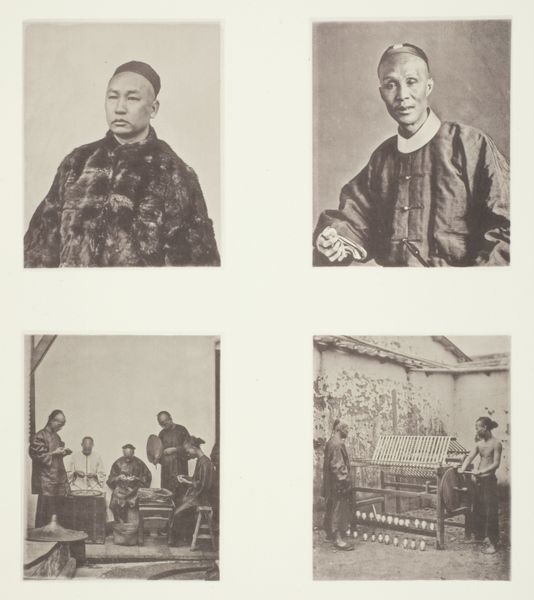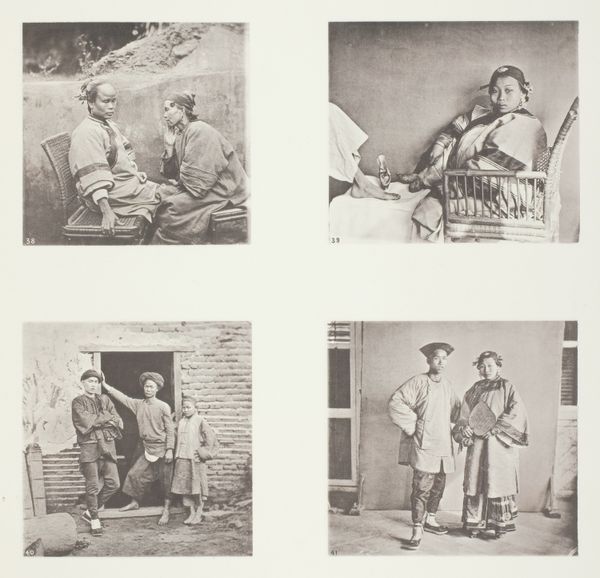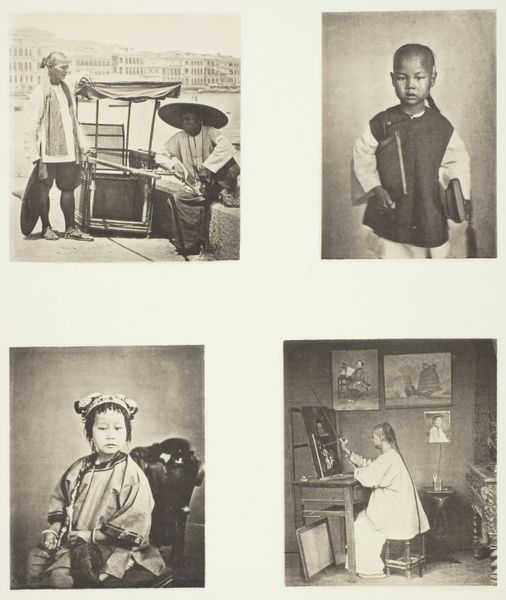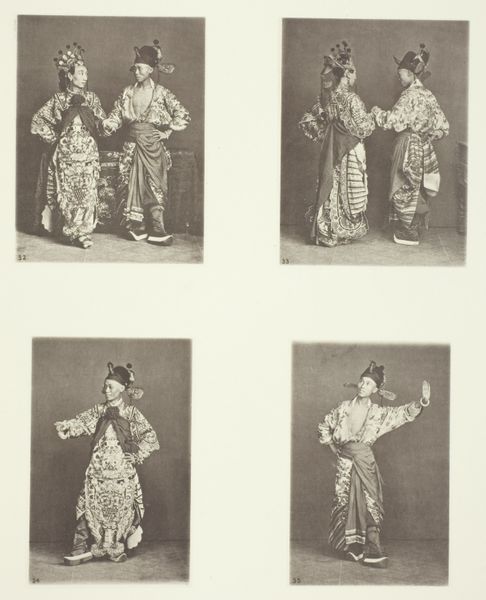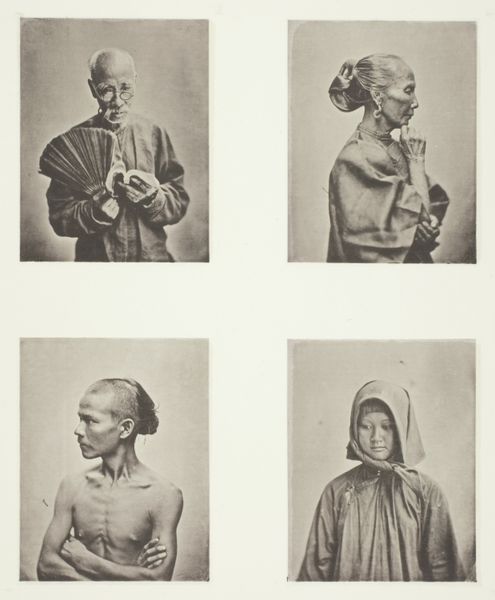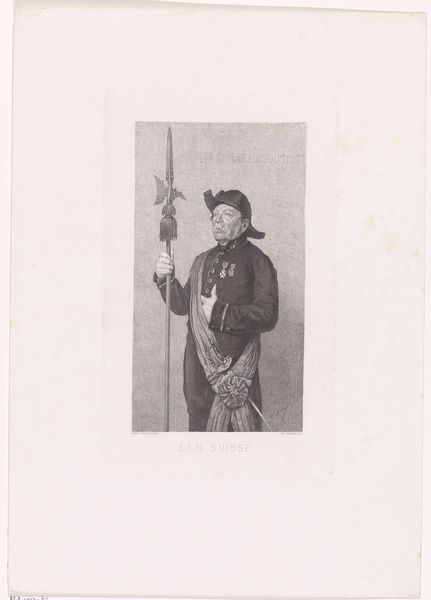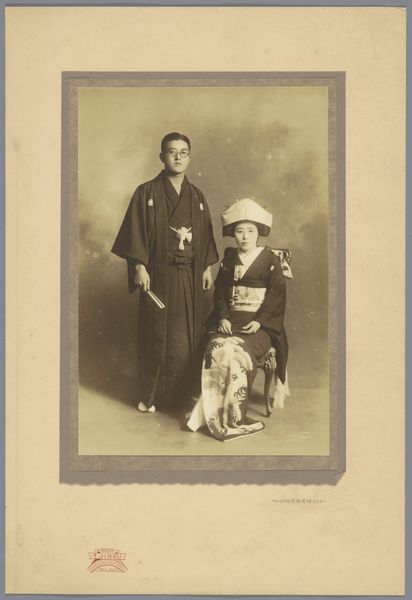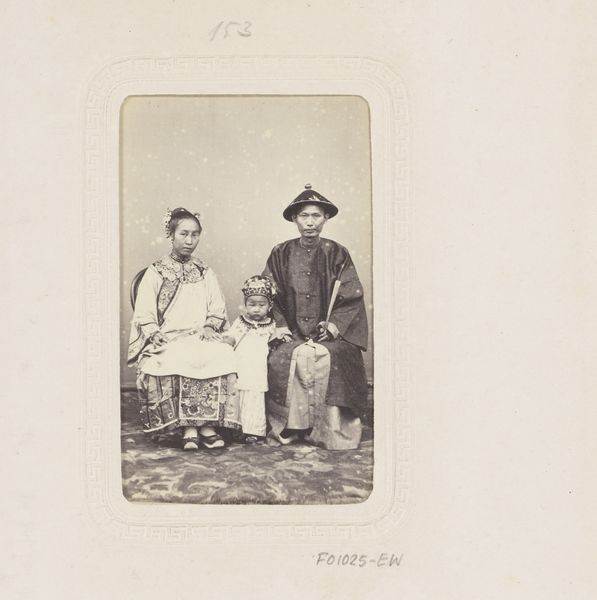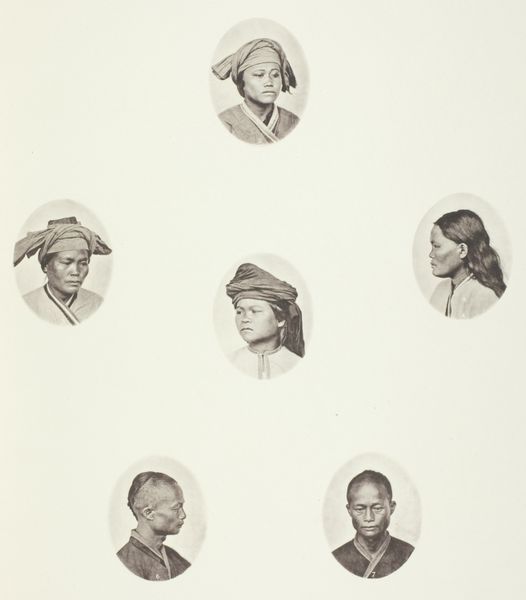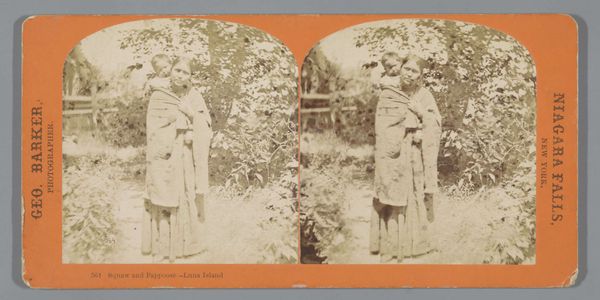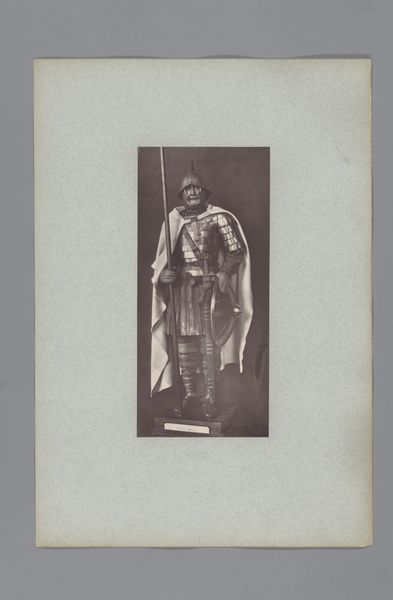
Boat Girls; A Canton Boatwoman and Child; Musicians; Musicians c. 1868
0:00
0:00
photography
#
16_19th-century
#
asian-art
#
ukiyo-e
#
photography
Dimensions: 10.9 × 8.7 cm (upper left image); 10.9 × 9.7 cm (upper right image); 10.9 × 8.6 cm (lower left image); 10.5 × 9.7 cm (lower right image); 47 × 35 cm (album page)
Copyright: Public Domain
Curator: John Thomson, around 1868, created these four photographic studies, now held at The Art Institute of Chicago. The work is titled "Boat Girls; A Canton Boatwoman and Child; Musicians; Musicians". Editor: I'm immediately drawn to the stillness and quiet intimacy. Despite being a collection of separate images, there's a unified tone. The monochromatic palette adds to this, focusing my attention on textures and the way light interacts with their garments and faces. Curator: Absolutely. Thomson was keen to document the diverse social fabric of China, moving beyond simply aesthetic images to show the daily lives and professions. The 'boat girls,' for example, highlights the significant role women held in river transport and commerce. Editor: You can see the emphasis on their clothing as almost uniform, identifying their shared profession, and, in some cases like the musicians, shared gender. But the technical aspect of producing photographs in that period…the glass plate negatives, the chemistry...that's really foregrounding the labor-intensive process. Curator: He used collodion process, requiring portable darkrooms and careful timing. That physical effort definitely impacted which subjects he chose, influencing a formal, almost staged representation rather than candid snapshots. It’s less of a social exposé, perhaps, and more of a visual archive influenced by Victorian-era interests in exoticism and scientific documentation. Editor: Precisely. Looking closely, you notice how textures become the key: the silky garments against the wooden instrument, the woven texture of a fan. He presents a window to a society that relies so much on materials, even if there is some exoticization present. I wonder what was actually traded between Thomson, his assistant, and these families in exchange for their portrait. Curator: Well, the work was sold commercially in Europe to provide a visual narrative to what the West saw of the East, helping in some way to shape ideas about this culture at the time, and how we see it now. Editor: It is still compelling how his choices of what to show create not just an archive, but an interpretation mediated by technology and personal aesthetics, inviting us to explore material lives through image-making. Curator: Ultimately, the series allows a look into the photographer's view of the social hierarchy and the role that profession plays within communities of the era, capturing them through a distinctly Western lens. Editor: And from the cloth to the instrument, he gives a glimpse into their craft and skill. It is a reminder of how important the work of preservation and social commentary of materials is in representing communities from afar.
Comments
No comments
Be the first to comment and join the conversation on the ultimate creative platform.

